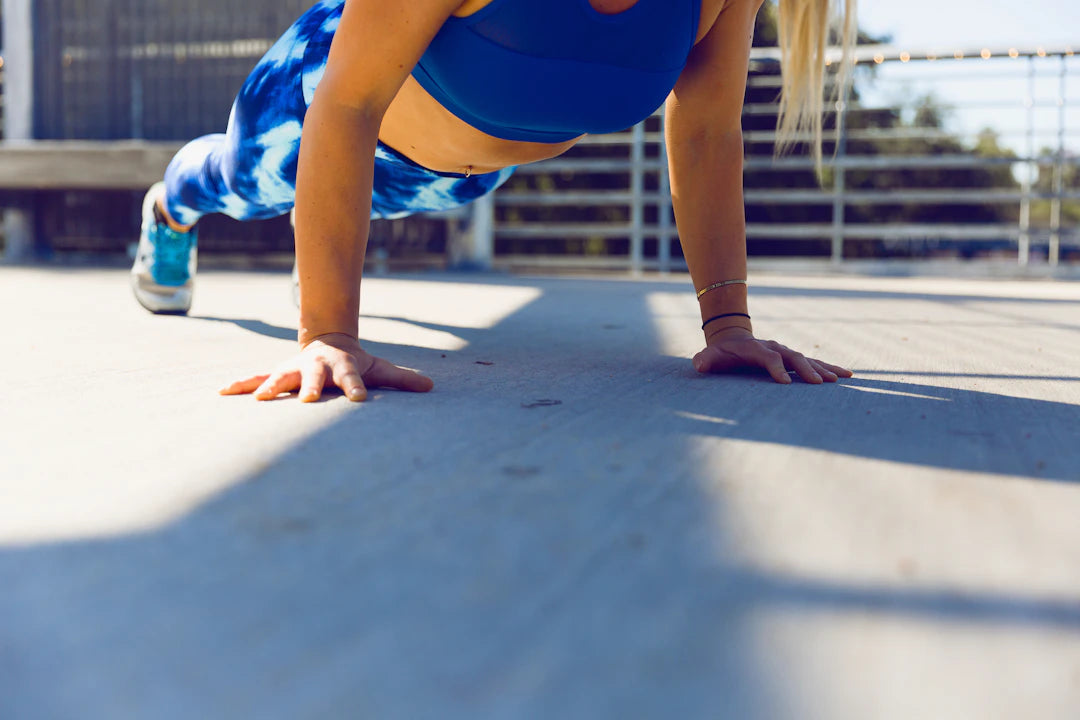
Create a Supportive Community for Active Seniors
Share
Overview
Creating a supportive community is essential for active seniors to enhance their physical and emotional well-being. The blog emphasizes the importance of building connections, engaging in joint-friendly workouts to stay active, and addressing challenges like joint pain and balance issues. Key lifestyle habits include balanced nutrition, adequate rest, and fostering motivation through social interactions. Overall, a nurturing environment helps seniors thrive and lead fulfilling lives.
Frequently Asked Questions
1. Why is community support important for active seniors?
2. What are joint-friendly workouts?
3. What strategies can help seniors manage joint pain during exercise?
4. How can seniors improve their balance safely?
5. What lifestyle habits should active seniors focus on for better health?
In today's fast-paced world, creating a nurturing community for active seniors is more important than ever. As we age, maintaining not only our physical health but also our emotional well-being can be pivotal in leading a fulfilling life. This blog will focus on the significance of fostering connections among seniors, the benefits of joint-friendly workouts, and simple strategies to overcome common challenges such as joint pain, balance issues, and motivation struggles.
Understanding the Importance of Community
For seniors, the benefits of a supportive community extend beyond companionship. Social engagement has been linked to healthier and longer lives. When active seniors connect with others who share similar interests or challenges, they cultivate an environment of encouragement and motivation. This sense of belonging can alleviate feelings of isolation and loneliness, which are common among older adults.
Building Connections
Creating a supportive community begins with building strong connections. Here are a few actionable ways to encourage this:
- Local Meet-ups: Organize regular gatherings, whether at a community center, park, or even online. This could be a book club, walking group, or just a coffee catch-up.
- Fitness Classes: Encourage participation in group activities such as yoga, tai chi, or dance classes that focus on joint-friendly workouts.
- Buddy System: Pair up seniors with similar interests or fitness goals. They can motivate each other to stay active and engaged.
Joint-Friendly Workouts: A Key to Staying Active
As we age, maintaining physical activity becomes essential. However, it's common for older adults to experience joint pain or stiffness, which can deter them from regular exercise. This is where joint-friendly workouts come into play. These workouts are designed to be gentle on the joints while still providing excellent health benefits.
What Are Joint-Friendly Workouts?
Joint-friendly workouts encompass a variety of low-impact exercises that minimize strain on the joints. Examples include:
- Swimming: The buoyancy of water supports the body, relieving stress on joints while providing a full-body workout.
- Walking: A simple yet effective way to stay active, walking strengthens the heart and improves circulation without any significant joint strain.
- Chair Yoga: This gentle form of yoga makes stretching and strengthening accessible for all fitness levels.
- Biking: Cycling is a great way to get cardiovascular exercise without harsh impacts on the knees and hips.
Tips for Starting Joint-Friendly Workouts
If you or someone you know is new to joint-friendly workouts, here are a few tips to ease into a new routine:
- Consult with a Professional: Before starting any exercise program, especially for those with pre-existing health concerns, it’s wise to consult a doctor or a trained fitness instructor familiar with senior needs.
- Start Slow: Gradually increase the intensity of workouts. Begin with shorter sessions and slowly enhance duration and effort as comfort and strength build over time.
- Listen to Your Body: Each person's body responds differently to exercise. Encourage seniors to pay attention to any signs of discomfort during workouts and modify as necessary to ensure a pain-free experience.
Navigating Common Challenges
Even with supportive communities and joint-friendly workouts, seniors may face challenges that can impede motivation and physical activity. Here’s how to address some of these issues:
Joint Pain and Stiffness
Joint pain can make exercise daunting, but it shouldn’t stop seniors from staying active. Here are some strategies to manage this challenge:
- Warm-Up and Cool Down: Incorporate a warm-up before workouts to prepare joints and muscles. Post-exercise stretching is just as crucial for alleviating stiffness.
- Incorporate Heat and Cold Therapy: Applying heat pads can relieve stiffness before exercising, while cold packs can reduce inflammation afterwards.
Balance Issues
Balance can decline with age, but specific exercises can help strengthen stability. Here are a few ways to enhance balance safely:
- Balance Exercises: Simple exercises like standing on one foot or walking heel-to-toe can significantly improve stability.
- Use Supportive Equipment: Encourage the use of railings, balance bars, or even chairs nearby for support during exercises.
Staying Motivated
Even within a supportive community, staying motivated can be a considerable challenge. Here’s how to keep spirits high:
- Goal Setting: Encourage seniors to set reachable, specific fitness goals. Celebrating small victories fosters motivation and community support.
- Incorporate Fun: Make workouts enjoyable by integrating music, games, or social elements that make physical activity feel rewarding and not like a chore.
Healthy Lifestyle Habits for Seniors
While exercise is undeniably essential, a holistic approach to wellness will significantly enhance the quality of life for active seniors. Here are vital lifestyle habits for a healthier life:
Balanced Nutrition
A balanced diet fuels the body for activity and helps manage health issues:
- Stay Hydrated: Ensure adequate hydration throughout the day, especially before and after workouts.
- Focus on Whole Foods: Emphasize fruits, vegetables, whole grains, lean proteins, and healthy fats. These nutrients support joint health and overall well-being.
Rest and Recovery
Rest is critical for active seniors. Taking time to rest and recover helps in muscle repair and joint recovery. Here are some tips:
- Scheduled Rest Days: Plan regular rest days between active workout sessions to allow the body to recuperate.
- Quality Sleep: Establish a consistent sleep schedule. Aim for 7-9 hours of restorative sleep each night to enhance overall wellness.
Thriving Together in a Supportive Community
Creating a supportive community for active seniors is an ongoing journey. It fosters connections, encourages fitness through joint-friendly workouts, and assists in overcoming the challenges that accompany aging. By prioritizing social interaction, physical activity, and healthy habits, seniors can thrive and enjoy a rich, fulfilling life.
Let’s advocate for an active lifestyle, encouraging our seniors to stay connected. Together, we can build a culture that values health, community, and respect, allowing older adults to feel empowered and engaged in their golden years.
